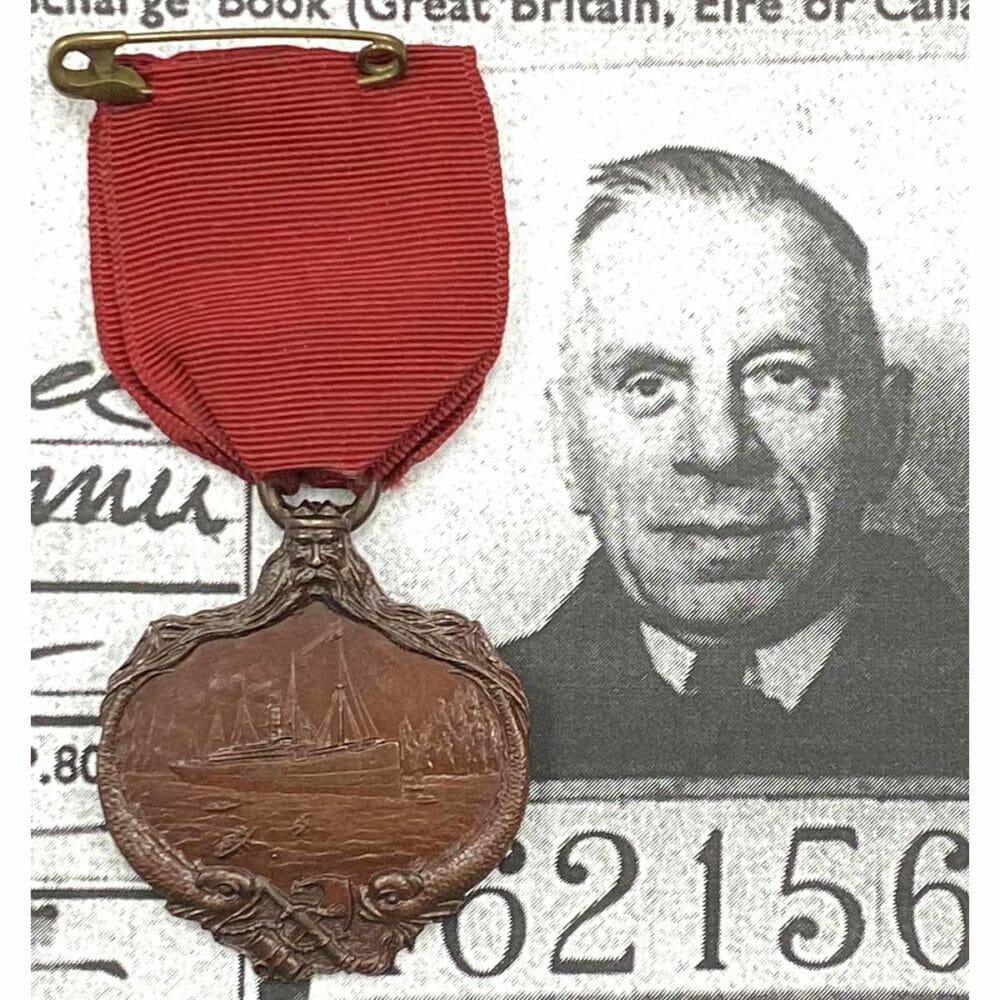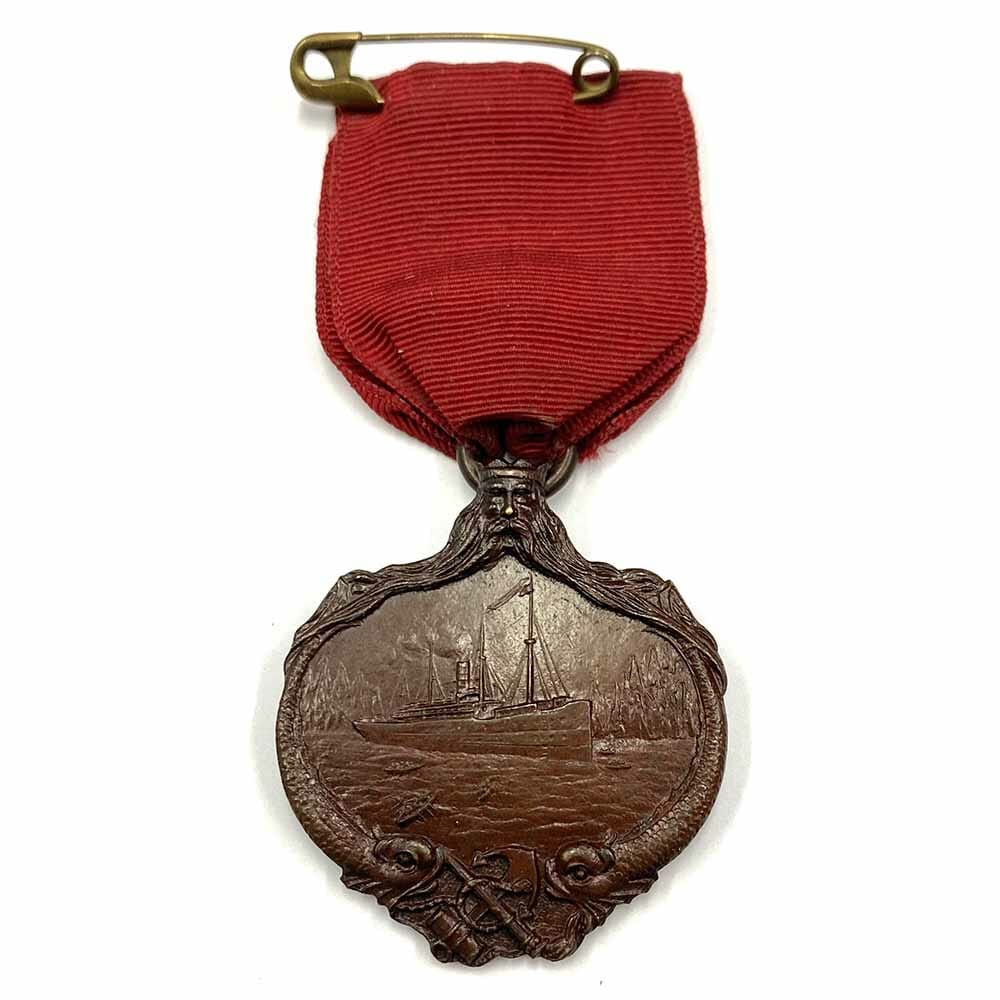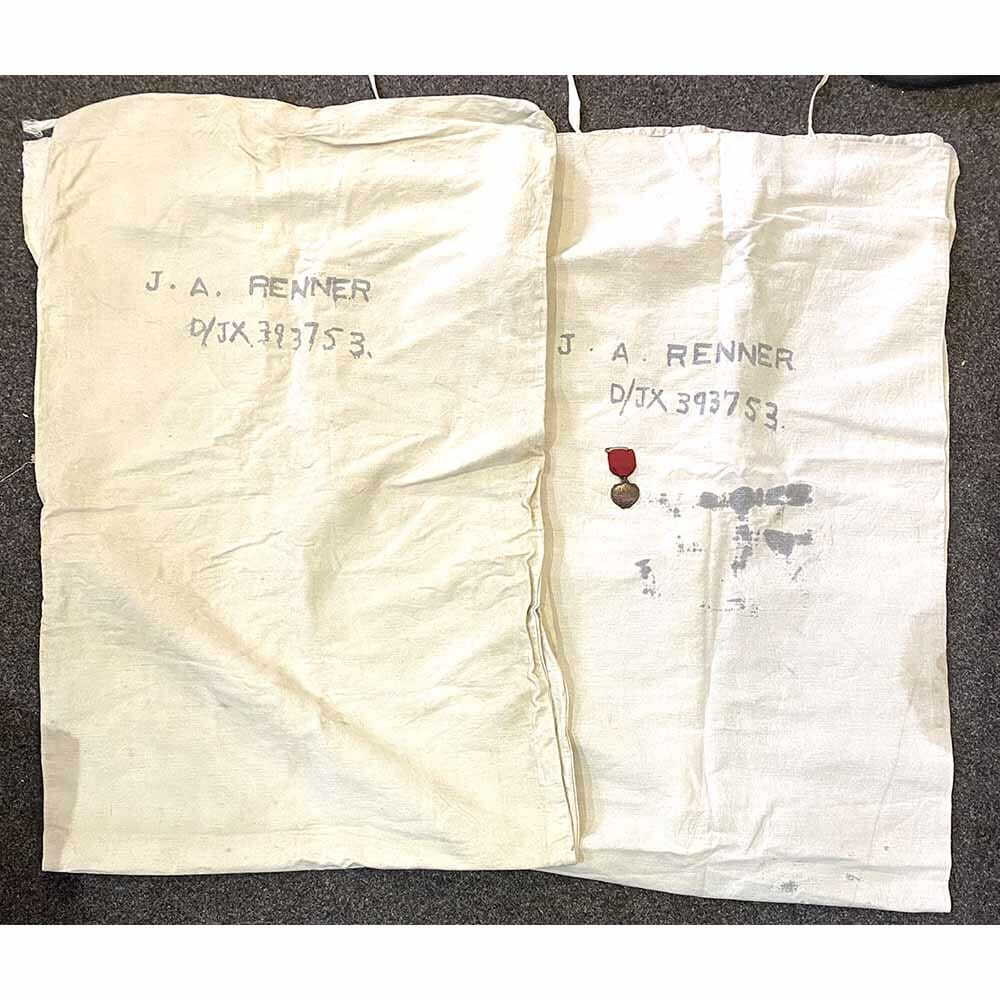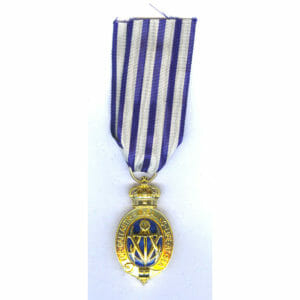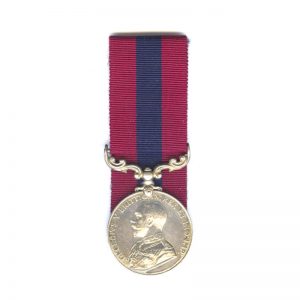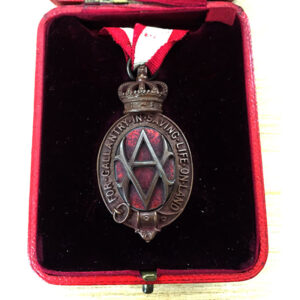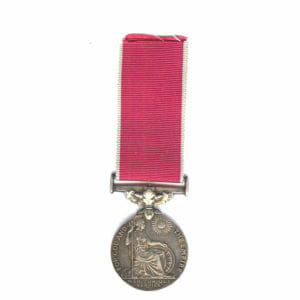Description
R.M.S. Carpathia and S.S. Titanic Medal 192, bronze, unnamed as issued, attributed to 2nd Baker John William Renner.
Provenance: passed to the previous owner by the Renner family in lieu of maintenance work, Included are the 2 named Navy Kit Bags of the recipient’s son, John A. Renner which accompanied the medal.”
An extremely rare original example in excellent condition, only 320 medals were awarded to the crew of the Carpathia present during the rescue, of which 14 were Gold, 110 were silver and 180 of this type made from Bronze, depending on the rating of the crew.
The medals were produced by Dieges and Clust of New York, the reverse bearing their maker’s mark.
The survivors of the Titanic created a group fun and along side a US Government resolution, raised $5000 to purchase the medals to be given to the crew of the Carpathia, and a silver cup for the Captain.
On 29th May 1912 many of the Titanic survivors gathered in the ship’s saloon to pay tribute to the heroic efforts of the crew of SS Carpathia. About 250 of the 320 of the Crew were present to accept their medals in person, the other 70 were mailed to the recipient. The silver cup was presented by Mrs J.J. Brown, known as “Unsinkable Molly Brown”, and Captain Rostron handed each of his crew their medals whilst the Purser read their names aloud.
Captain Rostron said as he gave out the medals:
“Without an eager and brave crew, I feel there would have been no rescue at all; and while I thank the committee for the cup and their praise of me and my officers, I want to thank every man and woman in my crew for their gallant and fine conduct under most difficult conditions. I am humbly proud of every man and woman in this ship’s company.”
John William Baker, was one of a number of Liverpudlian heroes of the Titanic disaster, he was born on 26th January 1882 in Liverpool, Lancashire at 42 Durden Street. He was baptised in St Nathaniel’s Curch on 6th May 1882.
He was the son of John Ralph Renner, and Engineer, and Lucy Cotter.
By 1901 he was about 19 years old and was an unmarried Baker living with his family at 177 Ear Road in West Derby.
Shortly afterwards he set out for sea with the Merchant Navy, appearing on the crew lists around 1904 as 4th Baker on board the ships Cedric and Dominion.
By April 1912, he had been at sea at least 8 years, and was 2nd Baker on board R.M.S. Carpathia when it came to the rescue of the Titanic in one of the most historic disasters in history.
Following this was the beginning of the Great War of 1914-18, during which 36 year old Baker John Renner, went locally to Blackpool, and attested for service for the duration of war, should he be required, joining the Army Reserve on 26th February 1916. He was living at 64 Underley Street in Liverpool at the time.
When he was needed, he was officially mobilised for service on 16th May 1917, and was posted to the Royal Army Medical Corps, sent for training at Blackpool Training Centre, but was fortunate to be found physically unfit for war service on 28th August 1917 and was discharged after 1 years 180 days of service. Upon a medical examination at the training centre the Doctor’s spotted an eye problem of Persistent Pupillary Membrane and it was determined that his “Left eye is almost useless.” and he avoided a possible posting to the front lines and was found to be unfit for any military service.
After the war on 21st August 1919 he married Phoebe Robinson, at the Church of England in Wavertree, St Thomas.
His son John A. Renner, named after him and his father, was born on 10th October 1923.
The Renner’s lived at 63 Taunton Street in Liverpoool, as of 1939, however John William Renner was absent on the census.
He appears to have not let his small eye problem effect him and had rejoined the Merchant Navy profession as 2nd Baker.
He is next found finally being discharged from the ship Dominion Monarch on 26th April 1951, a few months after his 70th Birthday he must have spent the entirety of WW2 and most of his life at Sea as a Baker.
However not long after his final retirement, only leaving the Navy at the age of 70, he died in Liverpool on 29th January 1952.
He is now buried in Allerton Cemetery, Liverpool, Section 2H, Grave 362
